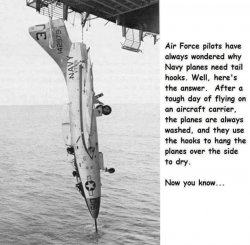One of the things that made the Macchi such a good trainer, was that whilst its behaviour was generally quite benign, it had the ability to demonstrate some aerodynamic quirks.
One of the lessons from aerodynamic classes was that a wing of more pronounced camber would generate more lift, but would stall at a lower angle of attack.
A manoeuvre that was taught on the course was the Derry turn. There’s a few variations on the theme, but basically you do (for instance) a steep turn to the right, but instead of rolling on lots of right bank, you roll to the left, through inverted, to the bank angle you want. So, if the turn needed 70º of right bank, you’d actually roll on 290º of left bank. As part of each student’s wings test, you work up an individual aeros display to show your testing officer. Your own instructor sees it, so there’s normally nothing new for the examiners. So, a certain bloggs discovered that if you really hooked into the roll input of a Derry turn (using full aileron and some rudder), and you then violently opposed the roll with full aileron, you could stall the aileron (cue the aero lesson above). The roll wouldn’t stop until the ailerons were centered. This was so consistent, that said bloggs incorporated it into his sequence, ensuring that it was done twice, once in each direction, just to show that it was intentional, not mishandling.
The same bloggs also discovered that you could do an inverted recovery from a stall turn (well, not all the way, but to about 30º nose low), and that too found its way into the sequence. 25 years later, the testing officer still remembered it.

















